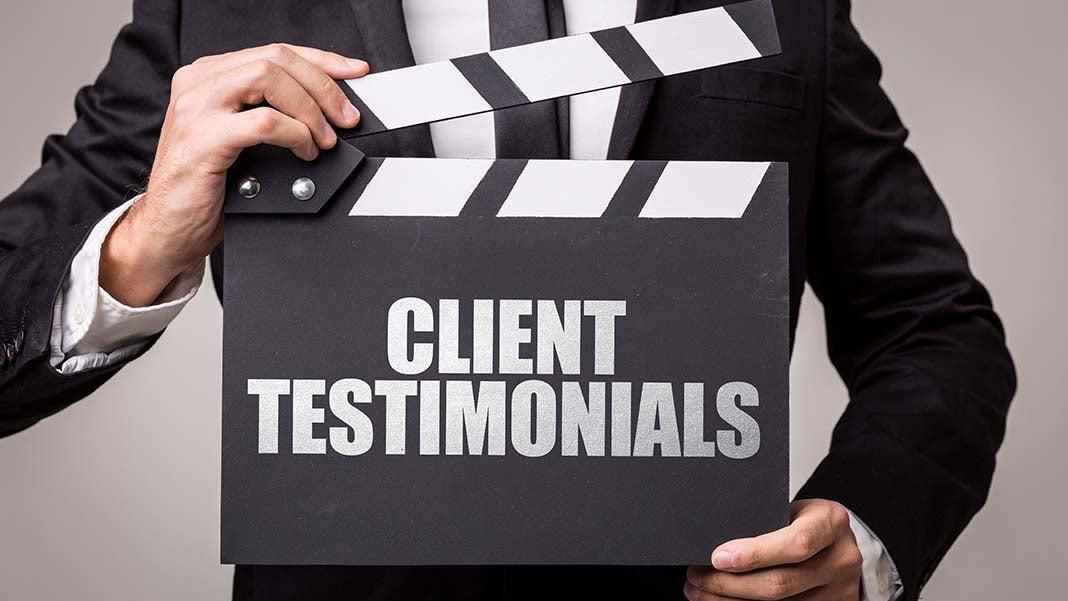How to Produce the Perfect Testimonial Video
By: Elaine Fogel

Never underestimate the power of a loyal, happy customer.
Whether you are an established business or a fledgling two-person startup, happy customers bring trust and excellent references to your brand. Two valuable assets that can’t be oversold. By the same token, leaving your client base unattended and generating unsatisfied reviews can have an equally profound, adverse effect on your marketing.
That’s why, whenever someone asks me about the ideal video to make once you’ve covered your essentials (like product videos and explainer videos) I always give the same answer: Testimonials.
We live in a customer-centric era. With digital channels such as social media taking increasingly bigger roles in the way we do business online, customer voices have more power than ever. And, with more people turning to user reviews to figure out who to buy from, testimonials have grown that much more effective.
IF you do them right, that is.
Start Strong with Effective Pre-Production
Before you go dusting off your good ‘ol camera and start shooting, there are a few things you’ll want to do from the get-go:
Make a flawless questionnaire
Even though I always say that the best testimonial videos aren’t scripted, having a good questionnaire is the key to success. After all, the best way to get those authentic and valuable answers you are after is by asking the right questions.
What constitutes “the right questions”? Those that let customers communicate their experience with your product or service, from beginning to a satisfactory end, and how it solved their problem or enhanced their lives. How did they find your product? What feature spoke to them most? How did things change after using it? Why are they recommending you?
Prepare your customers
Once you have a set of questions, you need to get good interviewees—which doesn’t mean scouting for a TV star among your client base. All it takes is to prepare the ones you like before the cameras are turned on.
Some video production companies send their questionnaire to customers before shooting a testimonial video. However, if you do that, there’s a risk that they’ll over-prepare their answers. You’ll end up getting something that feels less like a conversation and more like a well-rehearsed speech.
Instead, let your customers know the general topics you’ll be covering in the video, so they aren’t caught off-guard during the recording. Also, a nice touch is to meet them in person beforehand to establish some rapport and ease their nerves.
Scout for the perfect place
You don’t have to be a Hollywood producer to get the best location to shoot your testimonial video. The only thing you have to keep in mind is that the location should give viewers some context. For instance, a customer video about a software company works best when shot inside the customer’s offices. A non-profit organization’s testimonial will work best if shot where volunteers are working.
Figure out the best alternative, visit it ahead of time, and make sure it can accommodate what you need (privacy, lighting, security, etc.)
Think Like a Director During Filming
I won’t lie—filming a video can be tricky. It’s easy to get overwhelmed by the number of small details that can go wrong. Fortunately, you can control most of them even before pressing the record button (as well as during the interview!)
Here are a handful of concerns you might want to keep in mind, as they can significantly influence your testimonial’s quality.
Mind your camera setup
Ideally, a testimonial video is shot using multiple cameras. Using more than one camera lets you capture the same moment from various angles and then decide which one is the best during editing. That said, not all budgets allow for that. Don’t feel discouraged if that’s your case – you can shoot an exceptional testimonial with just one camera! But placement is key.
Place the camera at the same height as the interviewee and the interviewer to avoid looking up or down. Keep the frame in a medium shot and have someone operating the camera during recording to zoom in/out and capture customers’ reactions whenever they may happen.
Sit, but not just anywhere
To capture the best angle for your customer, you (the interviewer) should sit right next to the camera. That way, you’ll have the interviewee looking straight into the camera as if he or she is talking directly to viewers.
Also, be mindful of backgrounds. If you sit your interviewee in front of a white wall, it might be boring for your viewers. If, on the contrary, you put him in front of a cluttered scene, viewers might end up paying more attention to what happens in the back. Find a nice balance.
Lighting and microphone selection
Professionals use backup lights and high-quality mics to capture the perfect video and audio feed. But even if you don’t have that, you can still shoot a nice-looking video.
Make the most of existing lights—turn them all on if you have to, and use mirrors if you can to get even more light focused on your interviewee. Just be careful not to cast shadows on his/her face as you’ll get a displeasing look.
As for sound, if you’re using the camera’s built-in mic, be sure to pick a quiet location where you can capture the action without outside noises. If you must shoot outside, record the sound in a quiet place, shoot the video on location, and edit them together afterward.
Direct
Some people might feel nervous once the camera is turned on, so it’ll be your job to calm them by chatting casually. Keep the camera rolling and the interviewee talking until he/she feels comfortable. It’s better to have longer raw video from which to choose useful clips than getting few excerpts from a longer conversation.
Allow your interviewee to talk freely. You’ll cut what you don’t need during editing.
Use your questions to guide the interview but don’t interrupt the interviewee. If need be, you can go back to a question that wasn’t appropriately addressed later on.
Finally, listen to what your customer is saying! Look for opportunities to ask for more details or when to move onto the next question.
Inserts and cutaways
If the entire testimonial video is your customer talking, no one will watch it. You need to keep things interesting, and there’s no better way to do so than to place some inserts and cutaways.
These are shots of the interviewee from a different angle (like filming his eyes or hands), the surroundings or even the testimonial’s backstage. All of these clips add variety and provide some needed breaks in pacing.
Do Not Rush Editing
Once you get all your footage, it’s time for editing! This can be daunting for someone without experience, but it can be done. You’ll need a lot of time, patience, and research to get it right.
While I can’t teach you everything you’ll need in a single article, here are a couple of practical tips to point you in the right direction.
- Watch everything you filmed multiple times: This is a must in order to select the moments you like the most – from responses you really liked, to nice details and good context shots. Watching your content is the only way to ensure you’re using the best version.
- Software’s there to correct video issues: The most common ones relate to brightness and coloration. Fortunately, most video applications come with built-in filters and configurations that auto-correct most of these problems without any major intervention on your part.
- Add some post-editing elements:I’m not talking about a CGI dinosaur but rather a small box in the bottom to identify your customer by name and business, your brand’s logo in a corner, or some annotations that provide further context throughout the video.
Putting It All Together
It goes without saying, but you are probably aware by now that filming an excellent testimonial video requires a lot of preparation and hard work. Producing a polished, finished product is no easy task.
You have to consider the technical aspects of the shoot, location, interview, filming, directing … not to mention the editing! It’s a lot to keep track of. However, the results are more than worth it!
If you start feeling overwhelmed, remember that there are a lot of affordable video production companies that can help you out. And, never forget that the best testimonial videos aren’t about the brand, but the personal stories of the real people connected to them!
Author: Victor Blasco’s an audiovisual designer, video marketing expert, and founder/CEO of the explainer video company, Yum Yum Videos. Besides running the business, he’s a lifelong student of Chinese philosophy and a passionate geek for all things sci-fi.














